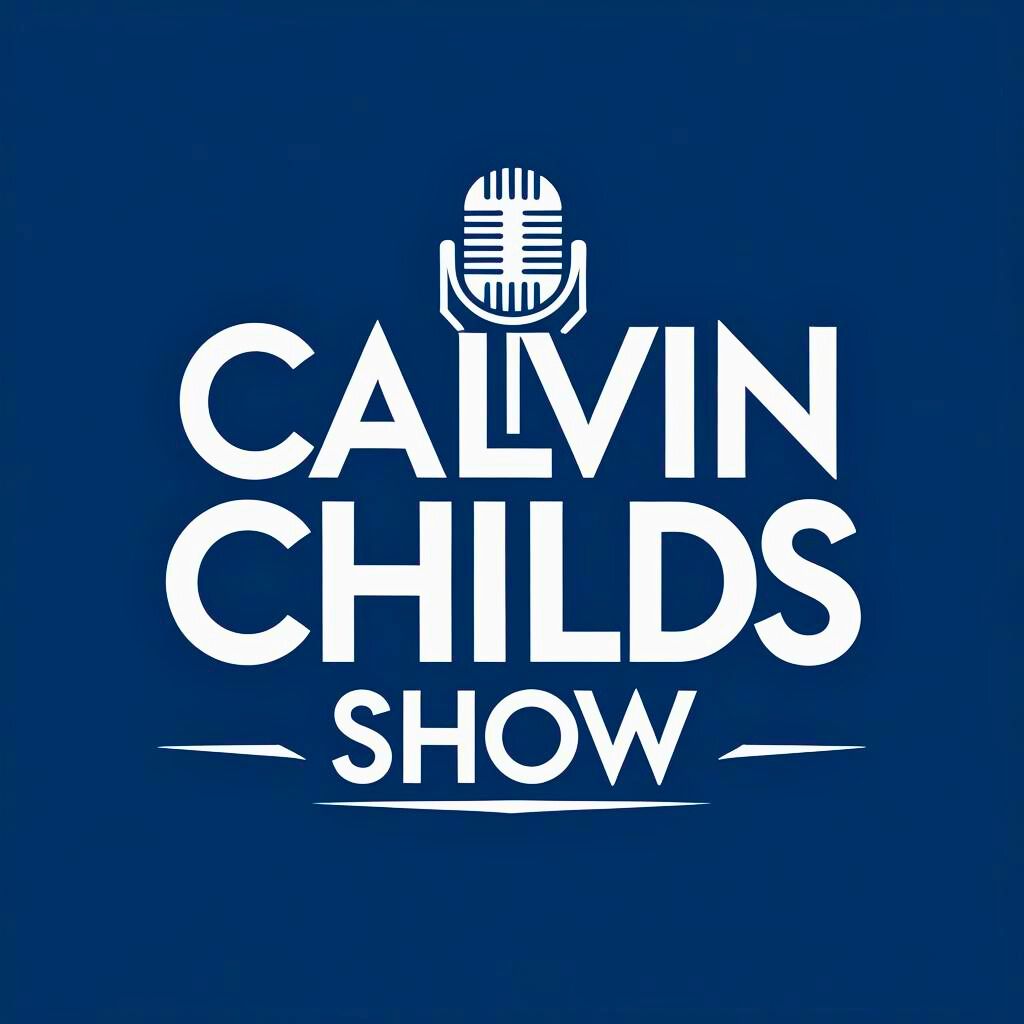
[ad_1]
Photograph: Eric Stubin, CEO of Trans-America
Individuals have been discarding about 70 kilos of textiles yearly per individual, with a whopping 85% ending up within the landfill and incinerators. However with the pandemic, the difficulty of trend waste is getting worse. The U.S. thrift business is overwhelmed with an unprecedented surge in donations because the coronavirus spurs a “quarantine cleanout frenzy” amongst stay-at-home Individuals.
One concept for reducing trend waste is to someway get Individuals to purchase much less new trend. All the opposite concepts revolve round stopping used clothes from going to the landfill, by transferring it again via the style business via reselling, recycling, and upcycling. That is what trend business professionals name the Round Economic system.
However all these phrases might be complicated and are sometimes utilized in deceptive methods. Right here’s what it’s essential know:
The Distinction Between Pre-consumer and Submit-consumer Waste
There are two forms of trend waste: pre-consumer and post-consumer.
Pre-consumer textile waste, resembling material scraps, cuttings, mock-ups, and overstock, is produced in the course of the design and manufacturing stage. Most manufacturers discard 10 to 30% of their material throughout manufacturing, and of the 80 billion clothes produced yearly, a 3rd are by no means bought regardless of deep discounting. A number of luxurious manufacturers have been caught destroying unsold inventory to protect a picture of exclusivity, and solely stopped doing so just lately after being criticized by traders.
However recovering and stopping any such waste is gaining momentum. France has banned the destruction of unsold stock, and NYC has enforced necessary recycling if textile waste represents greater than 10% of a enterprise’s whole disposal.

Manufacturers, tailors, and inside designers in NYC have began to companion with Fabscrap to take their pre-consumer waste, together with cuttings, samples, and overstock material. To know how material recycling works, I volunteered with Fabscrap for a three-hour sorting session in 2018. As a bonus, I additionally obtained to take residence 5 lbs of cloth (free of charge!) to make use of in my very own design venture.
In line with Fabscrap’s 2019 report, most material (~32%) is bought to trend college students, boutique designers, and crafters to be upcycled. Eight p.c are pure cotton or polyester or wool and are bought to fiber recycling firms like Evernu and Econyl to generate new fiber. Round 30% are blended fibers and might solely be downcycled into industrial supplies. The remaining are both paper cutters (~15%) and despatched to paper recycling or non-recyclable material (~14%) which find yourself within the landfill.
Submit-consumer textile waste is worn clothes that’s donated or trashed by customers. It’s fueled by rising consumption and our new disposable trend tradition which inspires us to purchase, put on, and transfer on to the subsequent pattern. We now purchase 60% extra garments than a decade in the past however maintain them half as lengthy, and each one in two individuals throws undesirable garments straight to the trash.
Even fast-fashion firms that take part in sustainability packages are unwilling to debate curbing consumption, as a result of they must develop gross sales to outlive and placate traders. As an alternative, they’ve turned to clothes recycling as a justification for continued consumption at an growing price.
How is trend waste collected and recycled?
The way in which clothes is collected and “recycled” could be very completely different from the method for bottles, cans, and cardboard. In reality, clothes “recycling” is a little bit of a misnomer. It’s really much less of a public utility, and extra of a personal business, with a variety of principally for-profit retailers for textile waste.
The style recycling business is notoriously opaque, so these numbers I’m about to share with you’re unfastened estimates. However, in response to the US EPA, 85% of textile waste goes straight to the landfill or the incinerator. Solely 15% of post-consumer textile waste (clothes that customers don’t need anymore) is diverted from the landfill. And their first cease is…

Resale
That is essentially the most sustainable possibility for protecting clothes in use. Clothes in excellent or like-new situation can get a second life via on-line resale platforms like Thredup, The RealReal, Poshmark, Vestiare Collective, and so on, or via brick-and-mortar classic and charity outlets. Progressive firms resembling Eileen Fisher, Patagonia, Arc’Teryx and REI have additionally just lately established takeback and resale packages for their very own gadgets.
In Eileen Fisher’s Renew program, for instance, 60% of the clothes the model takes again is cleaned and listed for resale. For clothes in less-than-perfect circumstances, menders repair lacking buttons, mend small holes, and over-dye stained clothes.
H&M companions with I: CO, an industrial recycler for clothes assortment and sorting, to take again any trend that customers usher in, together with from different manufacturers. H&M doesn’t resell the clothes it collects, however I: CO does go on wearable, useful gadgets to different resellers.
Shockingly, about 80% of the clothes that we donate to charity outlets doesn’t promote and is shipped to industrial recyclers. Confusingly, what we name industrial clothes recyclers don’t recycle the garments themselves — they simply kind it to be despatched on to different companies.
I visited the biggest textile recycler on the east coast, Trans-America, to hint the place these garments go. CEO Eric Stubin instructed me that the ability may kind over 70,000 kilos of clothes a day into round 400 classes. Sorters search for quirky, fashionable, classic gadgets (2%) like Levi’s denims and luxurious labels as a result of they’ll simply command a premium in an upscale classic retailer in Manhattan, and people are designated for resale.
Many of the used clothes (45%) is exported to creating nations in Africa, Latin America, and Asia for resale, normally in bales of 500 kilos. The united stateshas been the largest exporter of used clothes for the previous decade. Nevertheless, the standard of clothes exported is declining lately, and as much as 1 / 4 will not be sellable and results in an (usually fairly leaky and poorly managed) overseas landfill.

Upcycle
Upcycling means reworking undesirable merchandise and textile waste into one thing of upper worth. In terms of what clients give again to Eileen Fisher, for instance, a few quarter of it’s broken past restore. Renew designers take aside these patches of cloth and upcycle them into the ReSewn assortment. Patagonia converts broken takeback clothes into the Recrafted assortment.
There are lots of extra manufacturers that upcycle textile waste into new merchandise. It may be a time consuming and artisanal course of, however the outcomes are virtually all the time one-of-a-kind items of artwork. Therefore, the upper worth!

Recycle
Exactly outlined, recycling converts waste materials into one thing of roughly the identical worth. Pure cotton, polyester, nylon, and wool might be changed into new cotton, polyester, nylon, and wool textiles. Discarded water bottles can be recycled into polyester textiles.
The commonest textile recycling methodology is mechanical recycling, the place textile waste is sorted, shredded, bleached, and spun into new yarn. Mechanically recycled fibers, normally cotton and wool, usually have shorter fiber lengths and fewer power.
An revolutionary however extra pricey methodology, chemical recycling, can create the identical high quality fiber by liquifying outdated material in a chemical answer and pushing out new filaments like a pasta-making machine. For instance, Stella McCartney and Adidas’ latest sportswear assortment makes use of chemically recycled nylon and polyester. Chemical recycling for pure fibers continues to be being developed and examined, so it’s possible you’ll not have the possibility purchase a chemically-recycled cotton shirt for an additional 5 or ten years.
Downcycle
Downcycling turns textile waste into one thing of decrease worth. On the TransAmerica facility, about 50% of what is available in is broken or stained and is downcycled into wiping cloths, carpet padding, and sound insulation for different industries. This retains textiles out of the landfill for some time, however finally, these supplies will find yourself there.
Why isn’t extra clothes recycled?
As you may see, loads of what the business calls “recycling” isn’t really recycling. Ninety-five p.c of used clothes might be diverted from the landfill, however solely a tiny portion really makes it again into the style business. However regardless that the phrase “recycling” is most frequently used to explain what occurs to your clothes once you’re carried out with it, underneath the above definition, lower than 1% of world textile waste is estimated to be recycled. A fair smaller quantity is upcycled. These are the the explanation why:
Linear tradition
Earlier than the Nineteen Nineties, particularly in the course of the world wars and recessions, clothes was so useful that the majority stayed within the financial cycle, passing via levels of mending and reuse in inventive methods: from darning and dyeing all the way in which to quilts made from upcycled scraps. Nevertheless, the emergence of quick trend rapidly modified trend manufacturing, advertising and marketing, and retail fashions. Customers are conditioned to want ever-changing seems at an excellent low value, on the expense of high quality. When new types turn out to be obtainable, we transfer on from the stuff we cherished final month.
Infrastructure
Upcycled clothes and recycled fiber are normally extra pricey, as a result of expense of the reverse logistics (getting clothes again into the system from customers’ properties) and processing (sorting and recycling it). Resellers, upcyclers, and recyclers must work with no matter customers or manufacturers deliver again. It’s tough to affordably scale this system when the textile combine and situation are unpredictable. Most U.S. cities lack the funds, labor, and know-how to get better and kind giant volumes of soiled and blended textile waste effectively, the way in which they’ll course of cans and bottles.
Know-how
It’s difficult to generate new fibers from recycled ones whereas sustaining the identical perform, efficiency, and aesthetic. Textile recycling is chemical and energy-intensive. Most clothes is made with blended fiber, however present know-how can’t separate material with greater than two fiber varieties, or recycle material with greater than 5% elastane. Normally, mechanically recycled fibers underperform in high quality and must be blended with virgin supplies to make sure sturdiness. For instance, most denims with recycled cotton must have 80% virgin cotton blended in, and textiles created from ocean plastic are 90% from land-based sources.
Confusion
At this time, most individuals are used to the take-make-and-dispose linear way of life, not conscious of the devastating influence of their purchasing. However even when they’re conscious, they’re undecided what to do about it. As we’ve identified, the phrase recycle is utilized in locations the place it doesn’t fairly match, and specialists don’t agree on the very best path ahead. Even the rules on what to donate are complicated — is it OK to donate stained or hole-y clothes? — and isn’t as handy as simply throwing all of it within the trash.
Options within the pipeline
It’s clear that our present system isn’t working. As an alternative of scrambling to gather the steadily growing textile waste and making an attempt to do one thing with it, we must be specializing in options that minimize waste earlier than it’s generated.
Design out the waste.
Probably the most impactful choices are made on the design stage. Some designers and producers are pioneering zero-waste design with a extra environment friendly sample format that matches collectively like a puzzle. 3-D knitting machines could make bespoke knitwear with out seam strains or waste. Additionally, designing with a single materials or easily-separable parts will make recycling way more manageable. For instance, Stella McCartney demonstrated round design pondering along with her Loop Sneaker, utilizing interlocking clips as a substitute of glue and thread so that every half might be recycled.
Go digital.
The style business goes via a fast digital revolution, which may enhance effectivity, minimize prices, and waste. Beforehand, factories needed to ship a number of bodily samples to the design staff earlier than getting approval on the prototype. Now, designers may talk with factories with reasonable 3-D design to visualise the material, match, and so on., dramatically lowering pattern waste and delivery. Moreover, predictive analytics may assist manufacturers higher meet client demand and minimize stock by scraping social media and search queries. Blockchain can even be a major enabler for the resale market to hint and authenticate second-hand gadgets.
Regulate and increase recycling infrastructure.
Strong legislative constructions, resembling pay-as-you-throw coverage and necessary Prolonged Producer Accountability (EPR) have proved efficient in lots of EU nations to root out problematic waste. And EPR for textile waste is on the horizon in NYC(although the Pandemic seems to desk these insurance policies).
This laws requires producers to take accountability for his or her product on the finish of life, which inspires manufacturers to rethink manufacturing and distribution. The outcome could be extra sturdy merchandise, extra re-use, much less downcycling, diminished waste, and price financial savings for the federal government.
To construct a greater recycling system, some cities are tapping the strong logistics and processing capability of commercial textile recyclers. For instance, San Francisco has partnered with I: CO to gather textile waste from residential and industrial buildings to realize its Zero-Waste Initiative.
What are you able to do?
The lion’s share of post-consumer textile waste comes from the 85% that customers throw straight to the trash. So the largest factor you may management is your private waste stream.
You possibly can reduce your textile waste by:
- Purchase fewer and higher clothes gadgets and look after them correctly. Search for the evaluation on EcoCult and Good On You for suggestions of sustainable manufacturers.
- Make second-hand your first selection! Going to a thrift retailer is sort of a treasure hunt. I’ve discovered incredible high quality cashmere sweaters, silk attire, and linen pants for underneath $25!
- Repair up earlier than you quit. There are tons of DIY tutorials on-line from fixing a moth gap to protecting a stain with an ornamental patch. Test them out and let your inventive juice stream.

[ad_2]












.jpg)













.jpg)



.jpeg)






.jpeg)











.JPG)


































.jpg)







.jpeg)

.jpg)







2.jpeg)















.jpg)










































.jpeg)
.JPG)

.jpeg)


.jpg)














.jpg)






.jpg)

.jpeg)































.jpg)
























.jpg)

























.jpg)








.jpeg)






.jpg)




















.jpg)



.jpeg)
.jpeg)
.jpeg)






.jpg)






.jpg)




.jpeg)










.jpg)





























.jpeg)









.jpeg)











.jpg)




.jpg)

















.jpg)



































%20Installation%20Annie%20Leibovitz%20Académie%20des%20Beaux-Arts%20-%20Credit%20-%20Edouard%20Brane-2.jpg)
.jpeg)


.jpg)





























.jpg)






.jpeg)
5.jpeg)










































.jpg)






































.jpg)

.jpg)

.jpg)

4.jpeg)





















.jpg)







.jpg)












.jpeg)





.jpeg)

.jpeg)



.jpeg)




.jpeg)
























.jpeg)











.png)












3.jpeg)












.png)















.jpg)

.jpeg)




























.jpeg)


.jpeg)
















.jpg)

































.jpg)













.jpg)











.jpeg)
.jpg)



































.jpg)










.jpeg)



.jpeg)
3.jpeg)

.jpeg)
















.jpg)



















.jpg)
.jpg)


.jpg)

.jpg)






4.jpeg)



.jpg)











.jpg)
.jpg)








%20social.jpeg)








.jpg)
%20(1)3.jpeg)











.jpg)

.jpg)

.png)













4.jpeg)


.jpeg)















































5.jpeg)

.jpg)






.jpg)



4.jpeg)






.jpg)









.jpg)









































.jpg)

















.jpeg)















.jpeg)


















































.jpeg)















.jpeg)








.jpg)
.jpg)




.jpeg)

4.jpeg)















.jpg)





.jpeg)





.png)





.jpeg)




2.jpeg)


.jpeg)



.jpg)
4.jpeg)



















.jpg)









.jpg)




.jpeg)





4.jpeg)






4.jpeg)






.png)











.jpg)






.jpg)
.jpeg)

4.jpeg)





.jpg)










4.jpeg)
.jpeg)






%20(1).jpg)

_10082022_DavidHerranz_V3A5508.jpg)
.jpg)
.png)






















.jpg)


.jpg)




.jpg)





.jpeg)













.jpeg)



4.jpeg)


3.jpeg)



.jpg)









.jpeg)
.jpg)






















Maria_Baranova.jpg)






.jpg)









.jpeg)
.jpeg)





.jpeg)










.jpg)
.jpg)


.png)














.jpg)

.jpg)























.jpg)

.jpeg)



.jpg)









.jpg)





.jpg)
























.jpeg)






_31082022_DavidHerranz_V3A9492.jpg)







.jpeg)


.jpeg)



.jpeg)















.jpeg)

.jpg)




.jpg)




.jpg)











.jpg)




.jpeg)




.jpg)


5.jpeg)
.jpg)













.jpeg)







.jpeg)

.jpg)







.jpg)




.jpg)






.jpg)

.jpg)







4.jpeg)
.jpeg)








.jpg)


.jpg)




.jpg)

.jpg)



















































